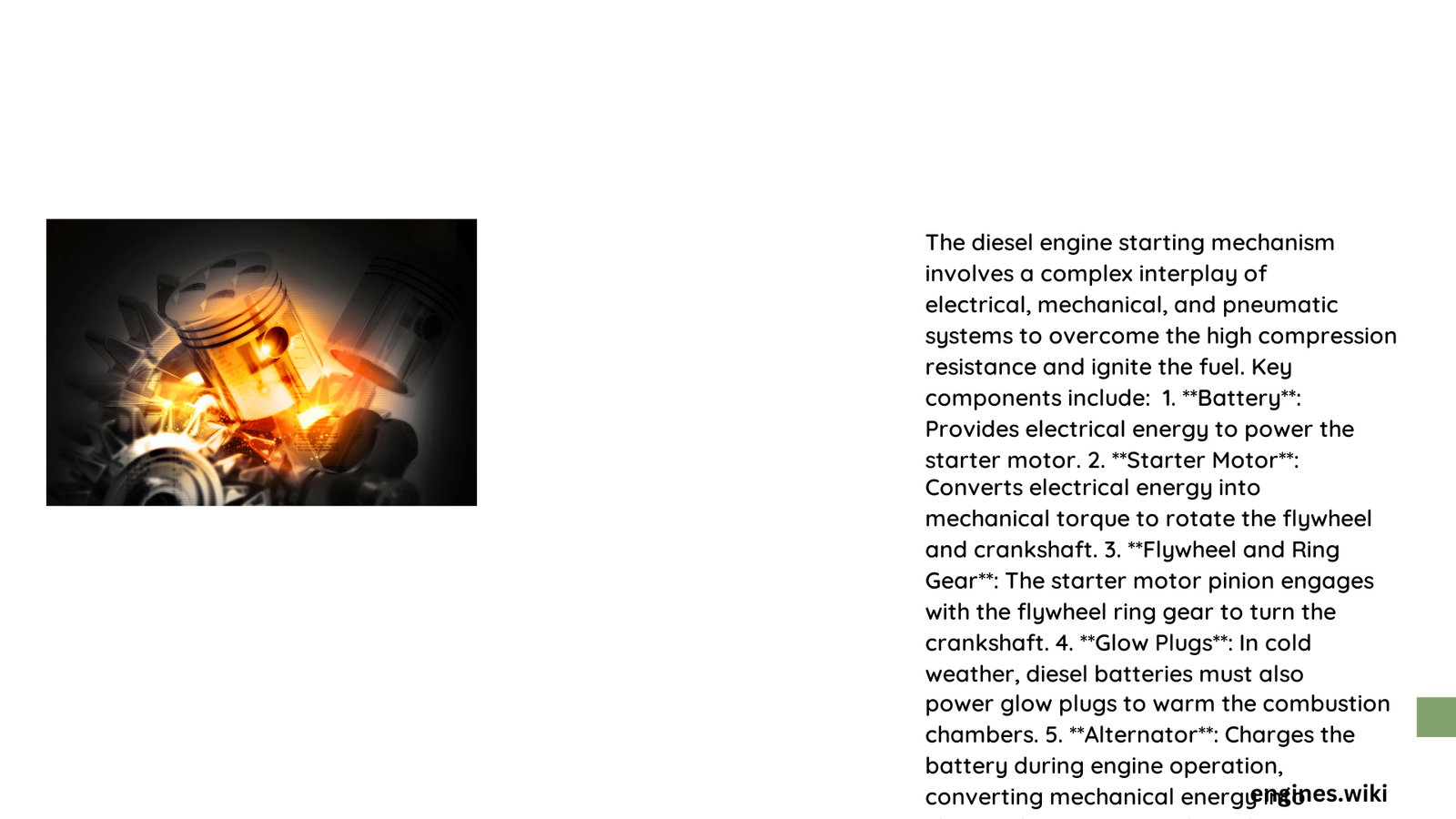The diesel engine starting mechanism is a complex, precision-engineered system that transforms electrical energy into mechanical motion through a synchronized sequence of electrical, thermal, and mechanical interactions. This intricate process involves multiple components working in harmony to initiate engine operation, including the starter motor, battery, glow plugs, and fuel injection system, each playing a critical role in transforming a stationary engine into a powerful, operational machine.
What Comprises the Diesel Engine Starting Mechanism?
Core Components of Starting System
The diesel engine starting mechanism consists of several crucial components:
- Starter Motor
- Converts electrical energy into mechanical rotation
- Typically 12V or 24V DC powered
-
Generates initial crankshaft movement
-
Battery
- Provides electrical energy
- Must maintain sufficient charge
-
Delivers high-current power during start sequence
-
Glow Plugs
- Preheats combustion chamber
- Critical for cold-start conditions
- Reduces engine starting resistance
How Does Starter Motor Initiate Engine Rotation?
Electrical to Mechanical Energy Conversion
When the start button is activated, the starter motor engages through a complex process:
- Solenoid Activation: Electrical signal triggers solenoid
- Pinion Gear Extension: Connects starter motor to flywheel
- Rotational Force: Generates initial crankshaft movement
- Compression Initiation: Creates necessary pressure for fuel ignition
| Component | Function | Voltage Range |
|---|---|---|
| Starter Motor | Rotational Force | 12-24 VDC |
| Solenoid | Electrical Switching | 12-24 VDC |
| Pinion Gear | Mechanical Engagement | Mechanical |
What Role Do Glow Plugs Play in Starting?
Cold Start Temperature Management
Glow plugs are essential in diesel engine starting, particularly in low-temperature environments:
- Preheating Combustion Chamber
- Reduces fuel viscosity
- Increases air temperature
-
Facilitates easier fuel ignition
-
Operational Characteristics
- Typical heat output: 10-20 watts
- Resistance: 1-2 ohms when cold
- Activation time: 10-30 seconds before start
How Does Fuel Injection Support Starting?
Precision Fuel Delivery Mechanism
Fuel injection system coordinates precisely with starting mechanism:
- Injection Timing
- Synchronized with compression stroke
- Millisecond-level precision
-
Ensures optimal fuel atomization
-
Pressure Specifications
- Typical range: 1,000-2,000 PSI
- Varies by engine design
- Determines fuel spray characteristics
What Are Cold Start Procedure Steps?
Systematic Engine Initialization
- Pre-Start Checks
- Verify battery charge
- Check fuel levels
-
Inspect electrical connections
-
Glow Plug Activation
- Turn ignition to “preheat”
- Wait 10-30 seconds
-
Monitor indicator lights
-
Starter Motor Engagement
- Turn key to “start”
- Maintain key position briefly
- Release once engine starts
Potential Starting Challenges
Troubleshooting Strategies
- Low Battery Voltage
- Use battery booster
- Check charging system
-
Replace battery if necessary
-
Glow Plug Failures
- Test individual plugs
- Replace faulty units
- Use diagnostic tools
Conclusion

The diesel engine starting mechanism represents a sophisticated interplay of electrical, thermal, and mechanical systems, requiring precise coordination and robust engineering.
